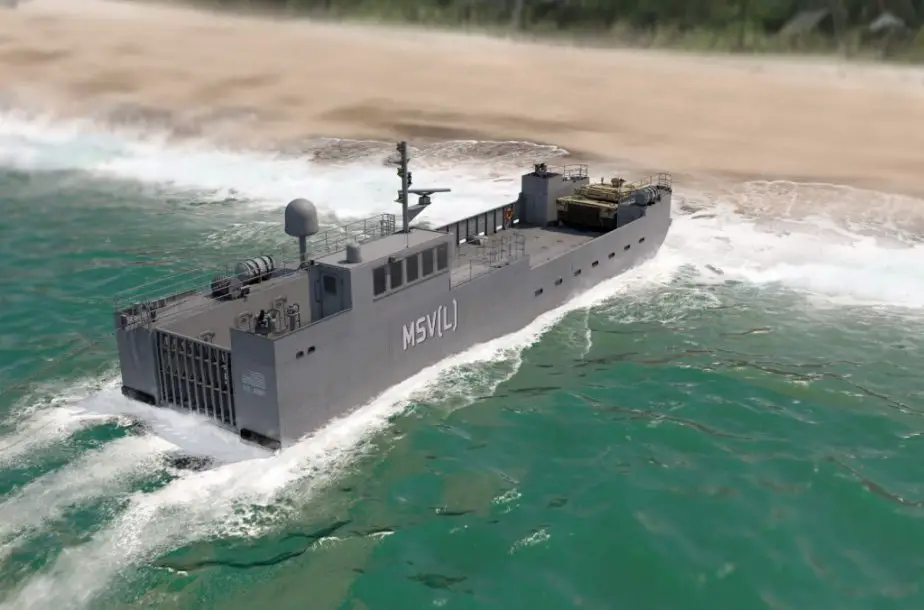Vigor held a keel-laying ceremony yesterday marking the first milestone in the construction of the Army’s next-generation landing craft, the maneuver support vessel (light) or MSV-L. The prototype is named in honor of SSG Elroy F. Wells, an Army watercraft operator killed in action in 1970 in Vietnam.
Vigor held a keel-laying ceremony yesterday marking the first milestone in the construction of the Army’s next-generation landing craft, the maneuver support vessel (light) or MSV-L. The prototype is named in honor of SSG Elroy F. Wells, an Army watercraft operator killed in action in 1970 in Vietnam.
 US Army’s next-generation landing craft (Picture source: Vigor)
US Army’s next-generation landing craft (Picture source: Vigor)
Dubbed the Maneuver Support Vessel (Light) or MSV(L), the craft will provide massive improvement in capability compared to the Mike Boats it is replacing.
Vigor started work on the new program after receiving a nearly billion-dollar contract in October 2017 to build the MSV(L) fleet. Vigor expects the site to employ up to 400 workers by 2023 building high-performance military craft, workboats, and aluminum fast ferries in addition to MSV(L).
Once the lead craft, SSG Elroy F. Wells, is completed and testing and refinements have occurred, the schedule calls for four vessels in the Low Rate Production phase, followed by up to 32 vessels once Full-Rate Production is underway.
The design of the MSV(L) was developed in partnership with BMT and is said to dramatically improve on the capabilities of the current LCM-8. It features an innovative tribow monohull that helps with seakeeping, beached stability and speeds in excess of 20 knots fully laden. A raised center jet and 4 foot (1.2 meters) draft fully laden enable landings on even the shallowest beaches.
The MSV(L) will provide intra-theater transportation of personnel and materiel, delivering cargo from advanced bases and deep-draft strategic sealift ships to harbors, inland waterways, remote and unimproved beaches, and coastlines, and denied or degraded ports.







